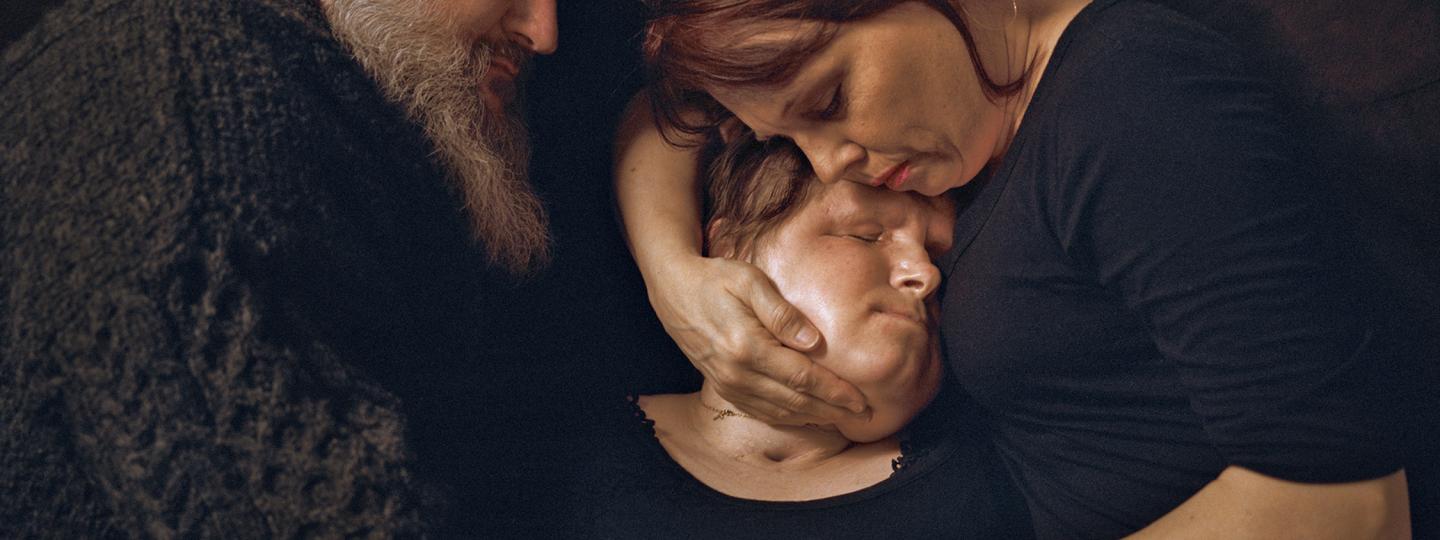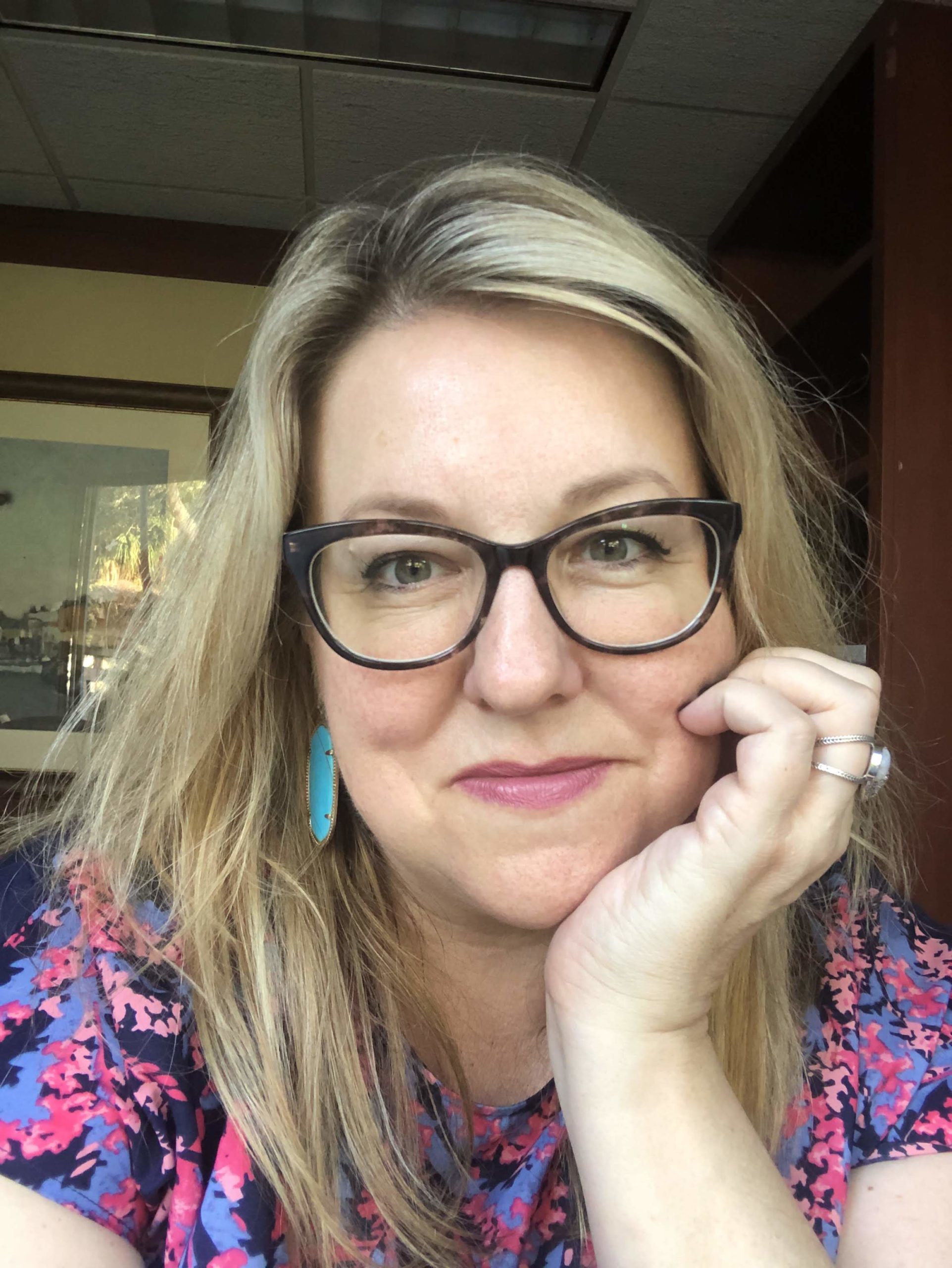A National Geographic piece that’s resonating with millions is really a story about relationships: between journalists and sources, editors and contacts, and especially, parents and their children.
At 18, Katie Stubblefield attempted suicide with a hunting rifle. She lived, but the bullet took most of her jaws, lips, her nose and part of her forehead. Her eyes were damaged as well.
At 21, she became the youngest American to undergo a face transplant in a 31-hour surgery at the Cleveland Clinic in Ohio. Her story inspired National Geographic to spend two-plus years with Katie and her family, the result of which is a gripping multi-platform story that went online this week.
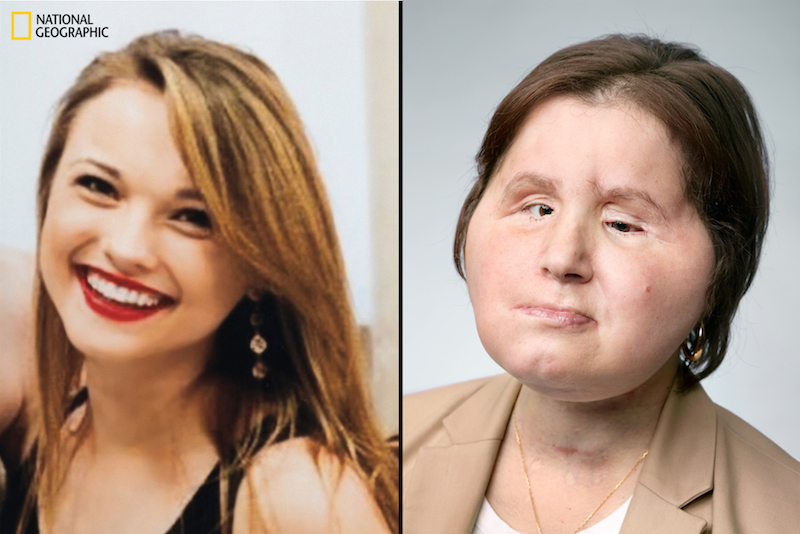
At 21, Katie became the youngest person in the United States to have a face transplant. She is the 40th person in the world known to have received a new face.
“What has really jumped out at me is Katie’s determination to try to make something good happen out of something terrible,” said Susan Goldberg, editor in chief of National Geographic.
Goldberg, the former executive editor of the Cleveland Plain Dealer, had developed a working relationship with the Cleveland Clinic president. A chance meeting led to a conversation about young Katie Stubblefield waiting for a face transplant.
Goldberg went all in.
“I went to Cleveland and met the family,” Goldberg said. “I knew we couldn’t tell the story the way we wanted to unless they felt totally comfortable.”
From there, it was easy for Goldberg to assign the story to Joanna Connors, whom she’d overseen at the Plain Dealer.
“I knew her to be an exceptional writer and reporter who was also very sensitive,” Goldberg said. “I thought she was the perfect profile of the kind of writer that we needed to assign to the story.”
After meeting with Katie’s parents, her doctors and later Katie herself, Connors and photographer Maggie Steber spent months dipping in and out of the Stubblefield’s life as they waited for Katie to get the call that a donor face had been found. Connors continued her work as a reporter at The Plain Dealer, finding time to freelance Katie’s story for NatGeo on nights and weekends, though she did take one summer off, unpaid.
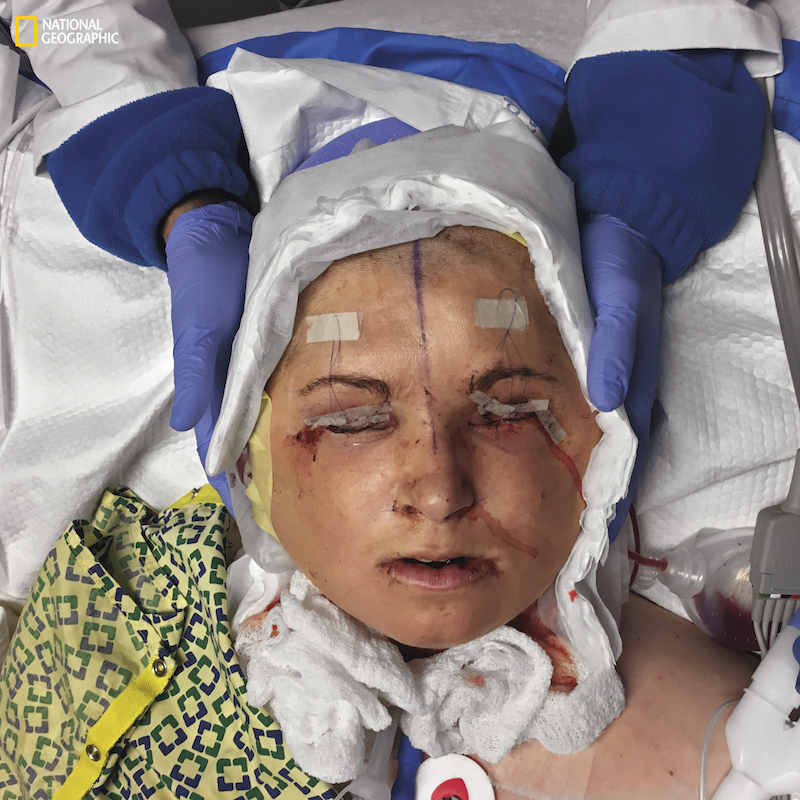
Connors said that Katie was the driving force behind her family’s willingness to remain accessible because it represented a first step toward her goal of speaking publicly against teenage suicide. They spent months with each other before the call finally came.
The call
The nature of transplants is spontaneous: When a match is made, the team must swoop into gear, which is how photographer Lynn Johnson ended up shooting the photos of the 31-hour operation.
“It’s very important to know that I was a pinch hitter because (Steber) was out of the country,” Johnson said in a recent phone interview from her home in Pittsburgh.
She captured perhaps one of the most iconic images in recent memory: the donor’s face on a sterile medical tray with scores of medical team gazing down upon it.
“I think that that photograph is like no photograph I’ve ever seen before,” Goldberg said. “It is startling; it is also beautiful, in a way … and when you look at how the medical team is clustered around the face, which is sort of midway on its journey, it’s almost this reverence about the photograph.”
Johnson, who’s no stranger to shooting medical procedures, said it’s “a bit of a dance” among people in any operating room.
“I remembered asking if I could get close and photograph the face, and was told, ‘No,’” she said. So she decided to back up and capture the larger moment.
“Really, the feeling in the room was one of almost a kind of sanctified or sacred moment, where people were just witnessing that extraordinary scene, to have someone’s identity plucked from their body and then live in this in-between landscape between one body and another.
“My memory of it is that the room went still. And then after the photograph and after that sort of moment passed, it was like, ‘Back to work!’”
Goldberg said that one aspect of the story that may surprise people is that the transplant was funded by the Department of Defense, which wants to better meet the needs of returning veterans with traumatic face and other injuries.
Connors said she applied her background as a long-form features writer to create intimacy with the Stubblefield family, and merged that with her first deep experience in medical and scientific writing. She learned to read journal articles, watched surgeries on YouTube, and joked that she essentially took gross anatomy as part of her background research.
Her trump card to gain respect of medical professionals?
“I told them that my father had been the managing editor of the Journal of the American Medical Association,” Connors said with a laugh about her dad, who also served at the Miami Herald as a medical and science writer. “I was kind of almost inadvertently steeped in a lot of that because my mom was a nurse.”
She said she often warned the Cleveland Clinic team before she asked “stupid” questions, and thought her determination to get it right gave the doctors confidence in her.
Being 'intentional'
Goldberg said the online response has been tremendous, and positive.
“When we started out doing this story, from the very moment of its conception … we started thinking about, ‘How do we tell this story across our platforms?,” the National Geographic editor said. “This was never just a magazine story.”
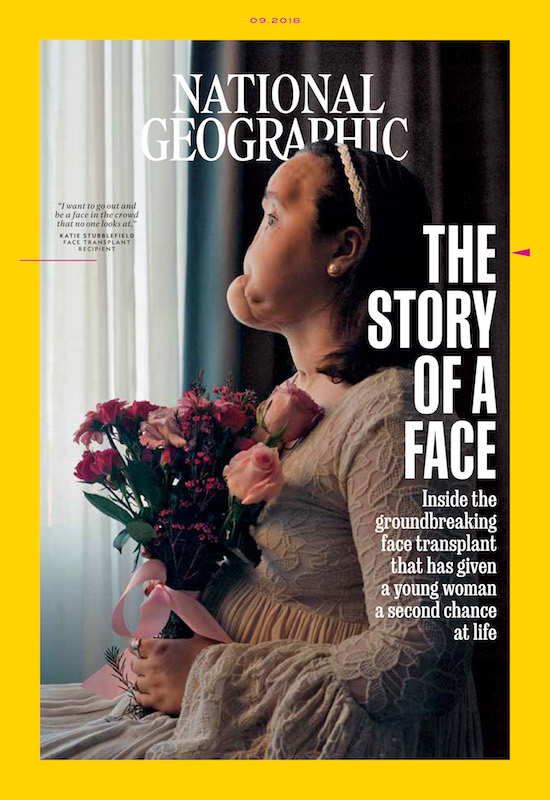
The feature went online Aug. 14, and subscribers began getting their magazines about the same time. (The print magazine hits stands Aug. 28.)
As of 11 a.m. Monday, the story had more than 1.2 million global unique visitors, making it the top online National Geographic story so far in 2018. The Instagram story was the magazine’s most successful ever in the @NatGeo account’s history, the magazine reported.
“To me, this is the model for how we should really do it going forward,” Goldberg said. “That we be much more intentional, from the very moment of the germ of the idea, about the kind of content we’re going to create.”

But this team of journalists credit Katie and her family for the story’s success.
Connors wrote about her personal experience with trauma, rape and PTSD in her book “I Will Find You” and the accompanying piece in the Cleveland Plain Dealer. She said that while she got close to the family, it was a tough assignment.
“Trauma reporting is hard. And it gets to you. And I’m sure it’s the same for anybody who deals with people in trauma. … You are absorbing pain, a lot of the time.”
Photographer Johnson said she won’t soon forget this assignment, and hopes others won’t, either.
“I just want people to see the family and the professionals beneath the photographs and know that their lives continue, and their struggles continue,” she said. “Just because the story is in and gone and run, that doesn’t mean that those folks don’t continue to live with the impact of that moment of violence. So I hope the intensity of the work is not lost, but that people really remember and the lives that continue and the struggle that continues.”

